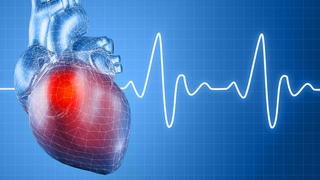
Today, surgeons are increasingly relying on 3-D imaging to plan and perform life-saving operations, particularly in conditions such as aortic dissection and aneurysm, where every millimeter matters. Image used for representational purposes only
| Photo Credit: Getty Images/iStockphoto
In the world of modern heart surgery, pictures can save lives — especially when those pictures are in three dimensions. The human heart and its surrounding blood vessels are intricate structures, and understanding their exact shape is crucial for successful treatment. Today, surgeons are increasingly relying on 3-D imaging to plan and perform life-saving operations, particularly in conditions such as aortic dissection and aneurysm, where every millimeter matters.
How it works
3-D imaging works by combining data from CT or MRI scans to create a lifelike, digital model of the heart and its major blood vessels. Unlike traditional two-dimensional images, which show flat slices, these 3-D models can be rotated, enlarged, and studied from every angle. This helps doctors see how the problem looks inside the body even before starting the operation, allowing for careful preparation and fewer surprises in the operating room.
One of the most dramatic examples of its value is in treating aortic dissection — a dangerous condition where the main artery that carries blood from the heart develops a tear. In such cases, time is critical, and precision is everything. Surgeons can use 3-D imaging to see the tear’s size, location, and how far it extends, to help them decide on the best surgical approach. It allows them to plan the operation virtually, understanding how to repair or replace the affected portion of the vessel with minimal risks.
Similarly, in people with aortic aneurysms — balloon-like bulges in the same large artery — 3-D images guide the surgical team in choosing the right size of artificial graft or synthetic tube that will reinforce the weakened blood vessel wall. Every person’s body is unique, and so is their aneurysm. 3-D imaging helps customise the treatment, improving safety and long-term outcomes.
Less invasive treatments
This same technology is now making its way into less invasive treatments for blood vessel problems. When doctors treat abdominal aortic aneurysms using stent grafts — tiny wire-mesh tubes placed inside the artery through small openings in the leg — 3-D imaging helps shape the entire plan. It enables doctors to measure the artery’s exact width, length, and curves. This ensures the stent graft fits perfectly, reducing chances of leaks or repeat procedures. In many hospitals, 3-D printed models of a patient’s artery are made before surgery, allowing the team to practice the procedure on a realistic replica.
Perhaps the most exciting development, however, is in planning for transcatheter aortic valve implantation, or TAVI — a new procedure that replaces a damaged heart valve without opening the chest. 3D imaging allows doctors to visualize the patient’s valve, nearby tissues, and blood flow pathway with unmatched accuracy. These detailed views help in selecting the perfectly sized valve and predicting any possible complications before they happen. For older patients or those too weak for open-heart surgery, this technology has made the difference between risk and recovery.
Inside the OT
Beyond planning, 3-D imaging is starting to play a role inside the operating theatre too. Surgeons can now use screens showing live, reconstructed 3-D pictures while performing a procedure. This real-time guidance adds a layer of safety and confidence, ensuring that devices are placed exactly where they should be.
The future of heart surgery is clearly moving toward visualisation — seeing not just the structure but the dynamics of how the heart and blood vessels move and respond. With 3-D imaging shaping diagnosis, planning, and execution, what once required intuition and experience is now guided by science and clarity.
For patients, this means more personalised treatments, smaller incisions, faster recovery, and a safer path to healing. As technology continues to evolve, three-dimensional imaging stands as one of the most powerful tools helping doctors truly see the heart as it is — and mend it with precision.
(Dr. Shrirang Ranade is head of department and consultant cardiothoracic and vascular surgeon, Manipal Hospital Kharadi, Pune. shrirang.ranade@manipalhospitals.com)
Published – November 12, 2025 04:41 pm IST















Leave a Reply